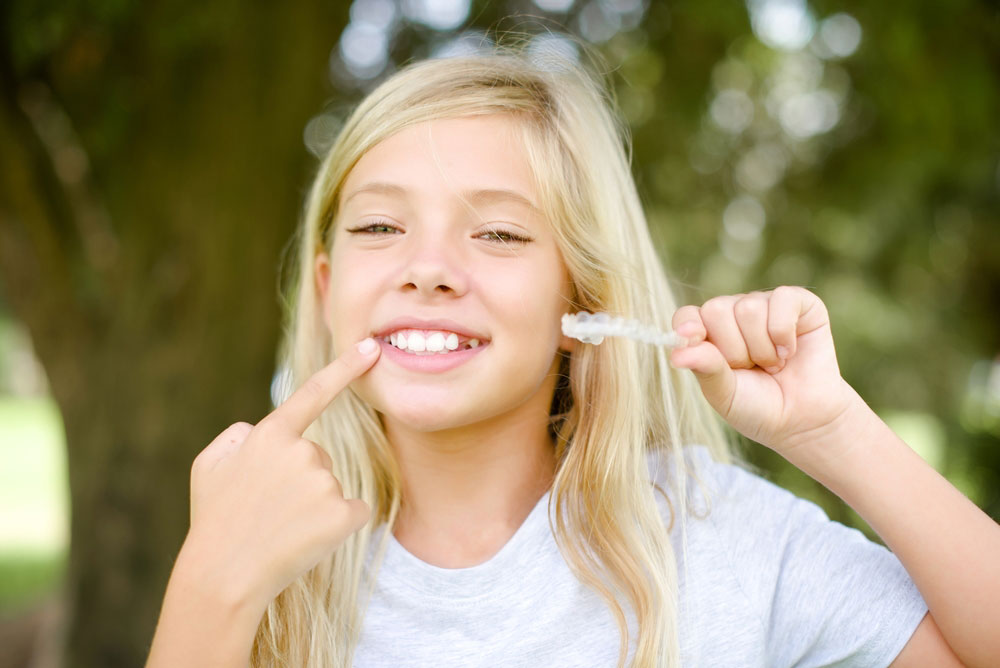 As a concerned parent, you may have noticed that your child’s teeth appear yellow despite consistent brushing and proper dental care. Understanding “Why Are My Kids Teeth Yellow” is crucial in addressing and resolving the issue effectively. In this article, we will explore the causes of yellow teeth in children and provide practical solutions to restore their bright, healthy smiles.
As a concerned parent, you may have noticed that your child’s teeth appear yellow despite consistent brushing and proper dental care. Understanding “Why Are My Kids Teeth Yellow” is crucial in addressing and resolving the issue effectively. In this article, we will explore the causes of yellow teeth in children and provide practical solutions to restore their bright, healthy smiles.
Why Are My Kids Teeth Yellow When I Brush Them Every Day?
Despite diligent brushing and dental hygiene practices, there are several reasons why a child’s teeth might still appear yellow.
Natural Tooth Color – The natural color of teeth can vary from person to person. Children’s baby teeth (primary teeth) are usually whiter than their permanent teeth. As your child’s permanent teeth emerge, they may appear more yellow in comparison to the remaining baby teeth. This variation is completely normal.
Enamel Thickness – Enamel, the outermost layer of the tooth, can vary in thickness. Thinner enamel can make the underlying yellowish dentin more visible. Since children’s enamel is often thinner than that of adults, their teeth may appear more yellow.
What Causes Yellow Teeth?
Identifying the specific causes of yellow teeth can help you address the issue more effectively. Here are some common factors:
Poor Oral Hygiene – Even with daily brushing, improper brushing techniques can leave behind plaque and food particles, contributing to tooth discoloration. Ensure your child is brushing correctly with circular motions and gentle strokes.
Diet and Beverages – Certain foods and drinks can stain teeth. Dark-colored beverages such as soda, cola, and some fruit juices can leave a residue that is difficult to remove completely. Additionally, foods rich in artificial coloring, such as candies and certain snacks, can contribute to yellowing.
Medication – Some medications can cause tooth discoloration. For example, antibiotics like tetracycline and doxycycline are known to cause yellow teeth if taken during tooth development. If your child has been on medication and you’ve noticed a change in tooth color, it might be worth discussing with your pediatric dentist.
Fluorosis – While fluoride is great for strengthening teeth and preventing cavities, too much of it can lead to a condition called fluorosis. This usually presents as white spots on the teeth, but in more severe cases, it can cause brown or yellow staining.
Trauma – An injury to a tooth can cause it to turn yellow or even brown. This happens because the tooth produces more dentin, the layer beneath the enamel, which can show through if the enamel is damaged.
What Can You Do About It?
Now that we’ve covered the “why,” let’s get into the “how.” Here are some practical solutions to help get your child’s smile back to its sparkling best.
Improve Brushing Technique
Make sure your child is using the right brushing technique. Use a soft-bristled toothbrush and fluoride toothpaste. Teach them to brush in small, circular motions and to cover all surfaces of their teeth. Brushing for two minutes, twice a day is the golden rule.
Dietary Changes
Limit the intake of foods and beverages that can stain teeth. Encourage your child to drink plenty of water, especially after eating, to help wash away any potential staining agents. Incorporate more fruits and vegetables into their diet, as they can help clean teeth naturally.
Regular Dental Check-Ups
Regular visits to the dentist are essential. Professional cleanings can remove stains that regular brushing might miss. Your pediatric dentist can also provide treatments like fluoride applications or dental sealants to help protect your child’s teeth.
Consider Whitening Options
For older children and teenagers, professional whitening treatments may be an option. Always consult with your pediatric dentist before starting any whitening regimen to ensure it is safe and appropriate for your child’s age and dental health.
Fun Ways to Encourage Good Oral Hygiene
Encouraging your child to maintain good oral hygiene practices is vital. Here are some strategies:
Make Brushing a Game – Turn brushing into a fun activity. Use a timer or a brushing app to make sure they brush for the full two minutes. You can also play their favorite song while they brush.
Use Reward Systems – Create a sticker chart and reward them for consistent brushing and flossing. After a certain number of stickers, they can earn a small reward like a new book or toy.
Let Them Choose – Allow your child to pick out their toothbrush and toothpaste. Having a toothbrush with their favorite character can make brushing more appealing.
The Importance of Leading by Example – Kids often mimic their parents, so make sure you’re setting a good example. Brush and floss your teeth together as a family activity. This not only reinforces good habits but also provides quality bonding time.
For a deeper dive into pediatric dental care, the American Academy of Pediatric Dentistry offers comprehensive resources at AAPD. Their guidelines and tips can provide additional support for maintaining your child’s oral health.
How KidSmile High Can Help
Yellow teeth in kids can be a source of concern, but understanding the causes and solutions can help you tackle the issue head-on. With the right approach to oral hygiene, diet, and regular dental check-ups, you can help ensure your child’s smile stays bright and healthy.
At KidSmile High Pediatric Dentistry, we’re dedicated to keeping your child’s smile bright and healthy. Our friendly, experienced team offers comprehensive dental care tailored specifically for kids. From regular check-ups and cleanings to specialized treatments for tooth discoloration, we have the expertise to address all your child’s dental needs. Visit us at KidSmile High Pediatric Dentistry to learn more about how we can help your child achieve a radiant, confident smile.
If you have any questions or need to schedule a check-up, feel free to contact us at KidSmile High Pediatric Dentistry . We’re here to help!



